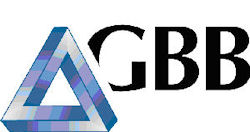Team:Groningen/Labwork/6 September 2013
From 2013.igem.org
(Difference between revisions)
| Line 30: | Line 30: | ||
<br><img src="https://static.igem.org/mediawiki/2013/1/1f/ColonyPCR_pSB1C3-S2-S5.jpg" width="50%" > | <br><img src="https://static.igem.org/mediawiki/2013/1/1f/ColonyPCR_pSB1C3-S2-S5.jpg" width="50%" > | ||
<br>pSB1C3-S2-S5 colonies. | <br>pSB1C3-S2-S5 colonies. | ||
| + | <br> | ||
| + | <br>Two colonies seem to be positive candidates. | ||
| + | <br>Colony A from the plate pSB1C3-S1-S5 was inoculated over-night in liquid culture (LB + Cm). | ||
| + | <br>Colony B from the plate pSB1C3-S2-S5 was inoculated over-night in liquid culture (LB + Cm). | ||
| + | |||
</div> | </div> | ||
Revision as of 10:41, 6 September 2013
Claudio
The plates (pSB1C3-S1-S5 and pSB1C3-S2-S5) show single colonies.ColonyPCR was performed on 6 colonies per plate (total of 12 colonies) beside one positive control (pSB1C3-S1).
The primers used were VF2 and VR (annealing temperature 56°C).
The samples were checked on agarose gel 0.8%.

pSB1C3-S1-S5 colonies.

pSB1C3-S2-S5 colonies.
Two colonies seem to be positive candidates.
Colony A from the plate pSB1C3-S1-S5 was inoculated over-night in liquid culture (LB + Cm).
Colony B from the plate pSB1C3-S2-S5 was inoculated over-night in liquid culture (LB + Cm).
 "
"







